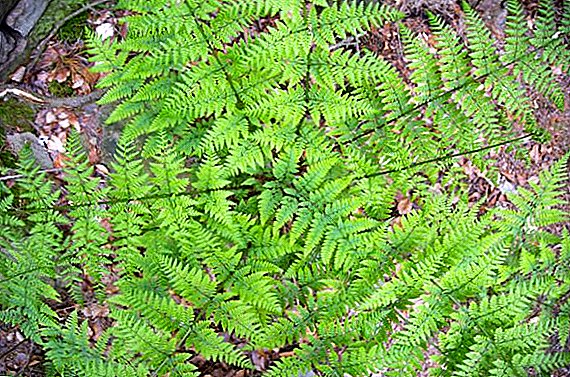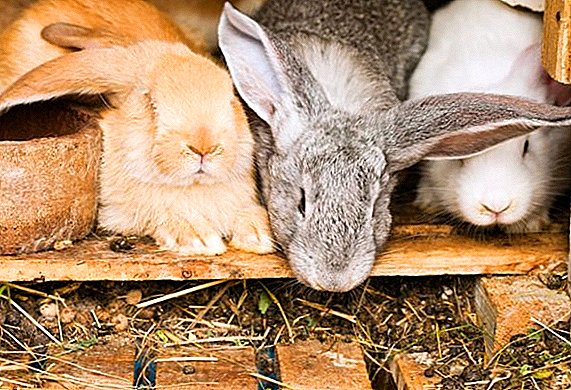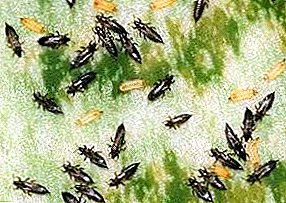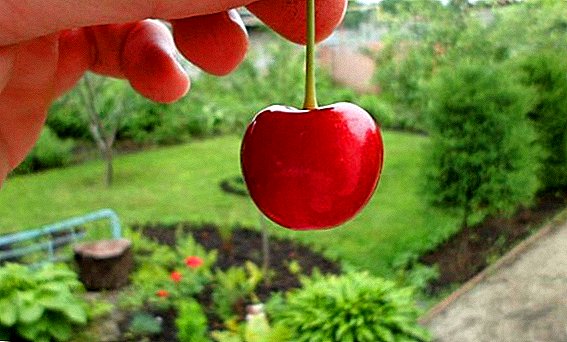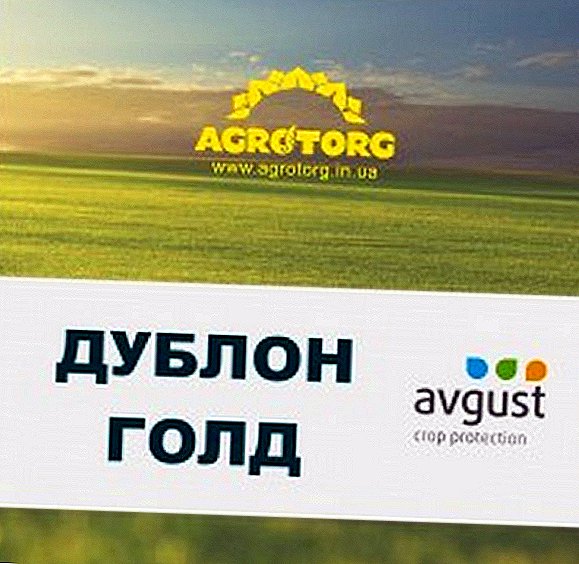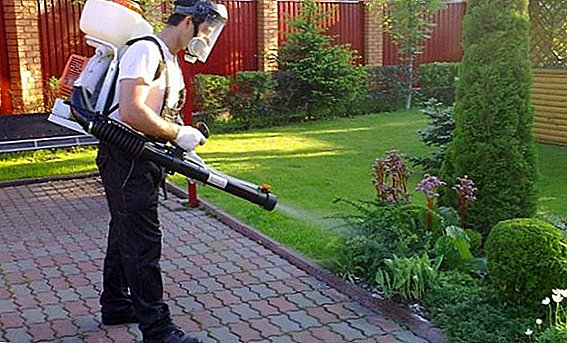 Conifers are beautiful plants that attract attention and adorn any area throughout the year. But, unfortunately, many of them are often subjected to attacks by harmful insects, as a result of which decorativeness is sharply reduced, and in particularly neglected cases, the tree dies. How to recognize exactly what pests attacked your conifers and how to treat them, let's talk in this article.
Conifers are beautiful plants that attract attention and adorn any area throughout the year. But, unfortunately, many of them are often subjected to attacks by harmful insects, as a result of which decorativeness is sharply reduced, and in particularly neglected cases, the tree dies. How to recognize exactly what pests attacked your conifers and how to treat them, let's talk in this article.
By the way, there are quite a lot of enemies in conifers. There are those who spoil the needles, there are those who eat the bark, suck the vital juices, damage the root system. With the most dangerous of them will introduce you below. 
Galliches
Galitsa (lat. Cecidomyiidae) is a sucking insect that belongs to the family of long-clawed dipterans. There are over six thousand species.
Appearance. Gall midges in appearance are similar to mosquitoes. They are small in size - from 1 to 4 mm. Happen with wings and without. Their larvae are different in color, sometimes found with aggressive bright colors: orange, yellow, pink.
Adults are usually brown. Their wings are covered with hairs. On the head is a long mustache. Insects feed on leaf sap. Begin years in May.  Symptoms of defeat. The most characteristic sign of gall midges appearing on a plant is unnatural small formations, growths on shoots are galls: needles stuck together among themselves, which grow over time.
Symptoms of defeat. The most characteristic sign of gall midges appearing on a plant is unnatural small formations, growths on shoots are galls: needles stuck together among themselves, which grow over time.
Larvae live inside them. Damaged shoots dry out. High air humidity contributes to the active spread of gall midges.
Treatment methods. To get rid of malicious insects will help modern insecticides allowed for use on conifers:
- Aktara;
- Calypso;
- Angio;
- Mospilan
 Spraying them should be carried out in accordance with the instructions on the package, but at least two times with an interval of two to three weeks.
Spraying them should be carried out in accordance with the instructions on the package, but at least two times with an interval of two to three weeks.Did you know? Coniferous plants emit a large number of phytoncides - substances that kill and inhibit the growth of pathogens, bacteria, fungi. Therefore, in the air of coniferous forests there are eight to ten times less harmful microorganisms than in deciduous ones.
Bark beetle
Bark beetle (lat. Scolytinae) is a group of beetles belonging to the same subfamily of the weevil family. There are about 750 species.  Appearance. These are small brown beetles, reaching sizes of 0.8-9 mm. Their body is oblong, the head is small. On the front back there are teeth, forming tubercles. Elytra covered with stripes or scales.
Appearance. These are small brown beetles, reaching sizes of 0.8-9 mm. Their body is oblong, the head is small. On the front back there are teeth, forming tubercles. Elytra covered with stripes or scales.
They usually live under the bark of old trees, although some species settle on young as well as sawn ones. From hibernation come out in April-May. Able to completely destroy the young plants.
Learn how to protect spruce from various diseases.Symptoms of defeat. Most often, beetles settle on the pine. You can find out what a bark beetle has got on the bark of a conifer, by small grooves, holes, and gaps from which the resin oozes. Needles from infected trees showered.
Treatment methods. Fighting bark beetles of conifers can be effective only at the initial stage of infection - when there are no more than two or three holes on the entire tree.  With a strong damage and with symptoms such as the appearance of fine dust under the bark, the fall of the bark, the tree can not be saved. It is better to uproot and burn it in time to avoid contamination of other plants.
With a strong damage and with symptoms such as the appearance of fine dust under the bark, the fall of the bark, the tree can not be saved. It is better to uproot and burn it in time to avoid contamination of other plants.
Injections are used for the treatment with insecticides, which make a bark beetle with a syringe. The most effective in these cases are:
- Calypso;
- Confidor;
- Empire-20;
- Antisheckeline.
Important! When treating trees, use personal protective equipment. Procedures carried out in dry weather without wind. Protect the body with a special suit, eyes - goggles, airways - mask
Typography beetle
Typography beetle (Lat. Ips typographus) refers to the subfamily of bark beetles, it is also often called the large spruce bark beetle.
Appearance. It is a dark brown insect with the size of 4.2-5.5 mm. It can be recognized by the characteristic sheaths that end in a steep slope with a groove, the so-called wheelbarrow. Along its edges are the teeth.  Symptoms of defeat. Like all bark beetles, the typographer feeds on bark of hvoynik, gnawing at them the moves. The most favorite delicacy of these beetles - they ate, but quite often they also eat pine bark, fir trees.
Symptoms of defeat. Like all bark beetles, the typographer feeds on bark of hvoynik, gnawing at them the moves. The most favorite delicacy of these beetles - they ate, but quite often they also eat pine bark, fir trees.
Holes and dents in the trunk, yellowing of the needles, falling off of the bark, severe galling, drilling flour on the trunk and under it will indicate that they have been infected. A characteristic sign of the presence of a typographer is the frequent tapping of a woodpecker on a conifer.
Treatment methods. It is better to fight with the printer before it settles on the coniferous plant, that is, to carry out preventive measures.
It must be understood that a tree that has strong immunity is unlikely to be prey for the harmful beetle, since it will be much more difficult for it to penetrate into the bark of a strong plant, and it will prefer to look for a weak, old, already damaged tree.  In order to prevent, it is necessary to carry out timely feeding, watering, improve the condition of the soil under and around the tree, timely get rid of damaged, dried or diseased branches.
In order to prevent, it is necessary to carry out timely feeding, watering, improve the condition of the soil under and around the tree, timely get rid of damaged, dried or diseased branches.
Familiarize yourself with the rules for growing coniferous plants such as cypress, larch, mountain pine, fir, spruce, juniper, thuja, cedar, mirikaria.At the initial stages of the lesion, sprays and injections with insecticides and biological preparations are used. On large conifer plantations, pheromone traps are also resorted to. In private farms use antiferomony.
In case of severe damage, the tree must be destroyed.
Did you know? Coniferous plant sequoia or mammoth tree is the tallest tree on earth. It grows in California (USA) and has a trunk height of 115.24 m. According to scientists, its age is 700-800 years.
Spider mite
Spider mite (lat. Tetranychidae) is a sucking harmful insect whose family of the same name numbers over 1270 species.
Appearance. This is a very small insect like a spider with 8 legs. It reaches the size of 0.3-1 cm. The body has an elongated. The coloration varies with the seasons: gray, yellow, orange, red.  Conifer usually affects red mite. He spends the winter under the remains of plants, dry foliage. Insects actively spread during heat and dry weather. They feed on plant cell contents.
Conifer usually affects red mite. He spends the winter under the remains of plants, dry foliage. Insects actively spread during heat and dry weather. They feed on plant cell contents.
Symptoms of defeat. Ticks, as a rule, live on the underside of the needles and entangle the branches with cobwebs. The appearance of the web suggests that the plant has already been affected very much. The needles turn yellow and fall off.
Treatment methods. For the purpose of prophylaxis, one should more often spray hvoyniki during the periods of summer heat with ordinary water. With a slight lesion, it makes sense to try to fight with traditional methods: infusions of insecticidal plants (dandelion, garlic), colloidal sulfur.  In case of a serious invasion, it is necessary to resort to spraying with insecticides or acaricides: Fitoverm, Akktelik, Akarin, Borneo, Appolo, Flumate.
In case of a serious invasion, it is necessary to resort to spraying with insecticides or acaricides: Fitoverm, Akktelik, Akarin, Borneo, Appolo, Flumate.
Escape mole
Escape mole (Lat. Argiresthia argentina) - a butterfly from the family Argyrestide. Harm to agricultural, fruit, coniferous crops. Coniferous threatens spruce, larch and juniper shoots moth.
Appearance. It is a small, up to 5 mm, brown butterfly. Its wingspan is 12 mm. On the wings there are white stripes. Hind wings narrow, with fringe.  Symptoms of defeat. For plants, the danger is not the insect itself, but its larvae, which feed on needles and young shoots. Pine brightens, becomes flabby, showered.
Symptoms of defeat. For plants, the danger is not the insect itself, but its larvae, which feed on needles and young shoots. Pine brightens, becomes flabby, showered.
Treatment methods. You can fight the larvae by spraying Karbofos, Chlorophos. Trees are treated at least twice, maintaining intervals of 7-10 days.
Did you know? Not all conifers are evergreen. Larch - the only conifer that dumps pine needles before the winter period.
Sawfly
Ephedra amaze spruce (lat. Pristiphora abietina) and pine sawflies (lat. Neodiprion sertifer). In the people they were called false caters.
Appearance. This hymenoptera is black or brown in color. It has dimensions from 4.5 to 6 mm. Wingspan - 9-14 mm. False tracks grow to 9-14 mm. Painted in light green.  Symptoms of defeat. Sawflies most often settle on young conifers. They feed on pine needles and slow down plant growth. They can take needles to the ground, leaving the shoots almost naked. Often, the affected trees have crown rounding, yellowing and twisting of needles.
Symptoms of defeat. Sawflies most often settle on young conifers. They feed on pine needles and slow down plant growth. They can take needles to the ground, leaving the shoots almost naked. Often, the affected trees have crown rounding, yellowing and twisting of needles.
Treatment methods. In May-June, they are treated with chemicals such as Chlorophos, Karbofos, Lepidotsid, Cypermethrin, Bi-58, Aktara, Zircon. 
Aphid
Aphid (Latin Aphidoidea) - a dangerous sucking insect belonging to the family of hemiptera. It has over 4 thousand species.
Appearance. Small insect reaching sizes of 1-2 mm. Depending on the species, it can be of different colors: green, brown, gray, black.
On the head of an insect there is a special proboscis, with the help of which it carries out its harmful activity. Individuals are winged and wingless.  Symptoms of defeat. The main symptom of the defeat of aphids will be the oppressed, unhealthy type of plant, stopping its growth, twisted and twisted shoots.
Symptoms of defeat. The main symptom of the defeat of aphids will be the oppressed, unhealthy type of plant, stopping its growth, twisted and twisted shoots.
It is precisely to such consequences that the aphid sucks the juice from the plant. If you notice such changes, then try to look under the needles. Perhaps there you will find a cluster of black or green small insects.
Very often, coniferous plants are affected by a specific aphid - caterpillars.Treatment methods. With a slight lesion, the tree should be treated with folk remedies: soapy water, decoctions and infusions of insecticidal plants.
 If the defeat is strong, then it is necessary to save the epheds with insecticides. In the fight against aphids the most effective:
If the defeat is strong, then it is necessary to save the epheds with insecticides. In the fight against aphids the most effective:- Actofit;
- Caesar;
- Maxi.
Important! Before treating coniferous plants in spring or summer, it is necessary to familiarize yourself with the instruction on the preparation and follow it strictly when preparing the product and when choosing the dosage.
Hermes
Conifer Pests Hermes (Lat. Aphrastasia pectinatae, Chermes abietis) - small sucking insects. Almost all conifers are amazing.
Appearance. In appearance, the Hermes are very similar to aphids, their body is covered with small fluff. Their body sizes do not exceed a few millimeters.  Symptoms of defeat. Harmful activity Hermes leads to the fact that the needles turn yellow, bent. The plant stops growing.
Symptoms of defeat. Harmful activity Hermes leads to the fact that the needles turn yellow, bent. The plant stops growing.
From the bottom of the needles you can find a cluster of black insects, resembling aphids, and white as from cotton wool, lumps - a kind of protection of Hermes.
Sucking juices, insects harm the plant, which leads to the loss of its decorative, weakening and the risk of invasion of other, more dangerous, pests, such as bark beetles. Hermes spruce provoke formation on the basis of shoots of galls - growths similar to cones.  Treatment methods. In May, it is necessary to inspect the plant more often in order not to miss the mass infection with Hermes. When the first symptoms are treated several times with systemic insecticides, for example Aktara, Commander, etc.
Treatment methods. In May, it is necessary to inspect the plant more often in order not to miss the mass infection with Hermes. When the first symptoms are treated several times with systemic insecticides, for example Aktara, Commander, etc.
Shchitovka and false shield
Shchitovka (lat. Diaspididae) and false guard (Lat. Coccidae) belong to the family of hemiptera. There are juniper shchitovka, pine shchitovka, pine yewnoshchitovka and other species.
Appearance. All shield and false shield can be recognized by a characteristic feature - the presence of a shield on the back. In the former, it is fixed on the body, in the latter it is not.  Depending on the type, they can be of different sizes - 1-4 mm and colors - more often than different shades of brown. Detecting pests is not so easy, they settle on the trunk and shoots and look like small natural growths, plaques.
Depending on the type, they can be of different sizes - 1-4 mm and colors - more often than different shades of brown. Detecting pests is not so easy, they settle on the trunk and shoots and look like small natural growths, plaques.
Symptoms of defeat. Having settled on the coniferous culture, the scythe and the false shield suck its juice, as a result of which the shoots bend, dry out, the plant drastically slows growth. The presence of a false guard can be identified by the brown needles, which are covered with sticky secretions.  Treatment methods. When several individuals are detected, they are scraped mechanically with a brush and the wood is treated with a soap or soap-kerosene solution.
Treatment methods. When several individuals are detected, they are scraped mechanically with a brush and the wood is treated with a soap or soap-kerosene solution.
Mass spreading should be suppressed by insecticides Aktellik, Rotor, Karbofos, Chlorofos, Aktara, Konfidor.
Did you know? The ephedra are included in the list of the oldest and heaviest trees on earth. The most ancient living tree is considered an intermountain spine pine called Methuselah. She is over 4800 years old. And the largest in terms of mass and volume is considered a giant sequoiadendron, nicknamed "General Sherman." The volume of its trunk is 1487 square meters. m, and weight - 1900 t.Compliance with the rules of agricultural engineering will help to avoid attacks by a number of harmful insects and the development of diseases. Coniferous plants should be planted, picking up a place for it, soil, lighting in accordance with the recommendations for this type.
 The ephedra do not like thickened - it is in thickened plantings, where there is no normal air circulation, there is an active growth of pathogenic fungi, the spread of pests.
The ephedra do not like thickened - it is in thickened plantings, where there is no normal air circulation, there is an active growth of pathogenic fungi, the spread of pests.When growing, you should also follow the tips on proper watering and feeding, as well as sanitary pruning of sick and old branches. Recommended spring preventive spraying with insecticides and fungicides for conifers.
One or two treatments are enough, and your coniferous plants will delight you with their beauty and healthy appearance throughout the year.



